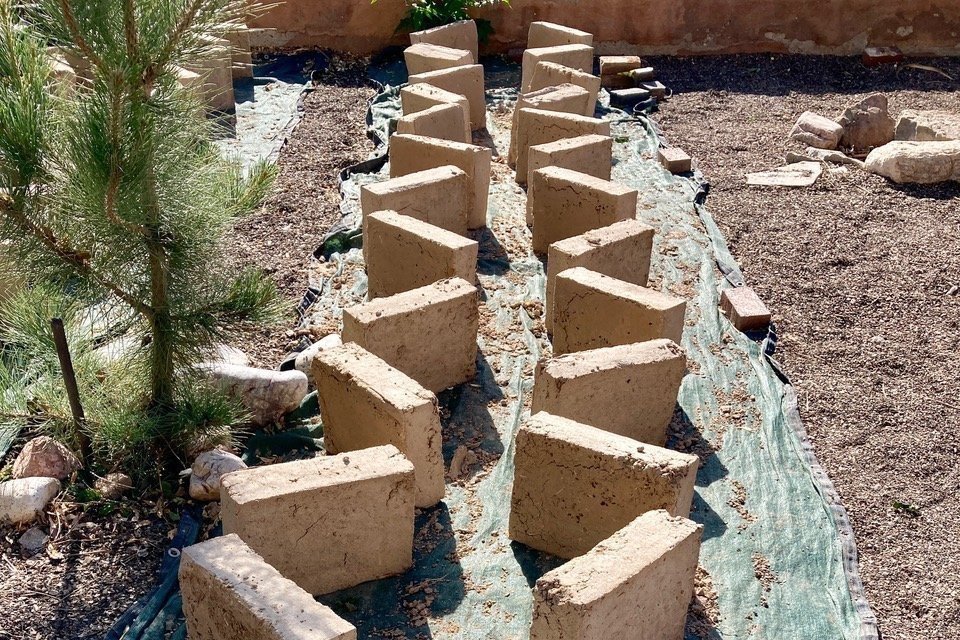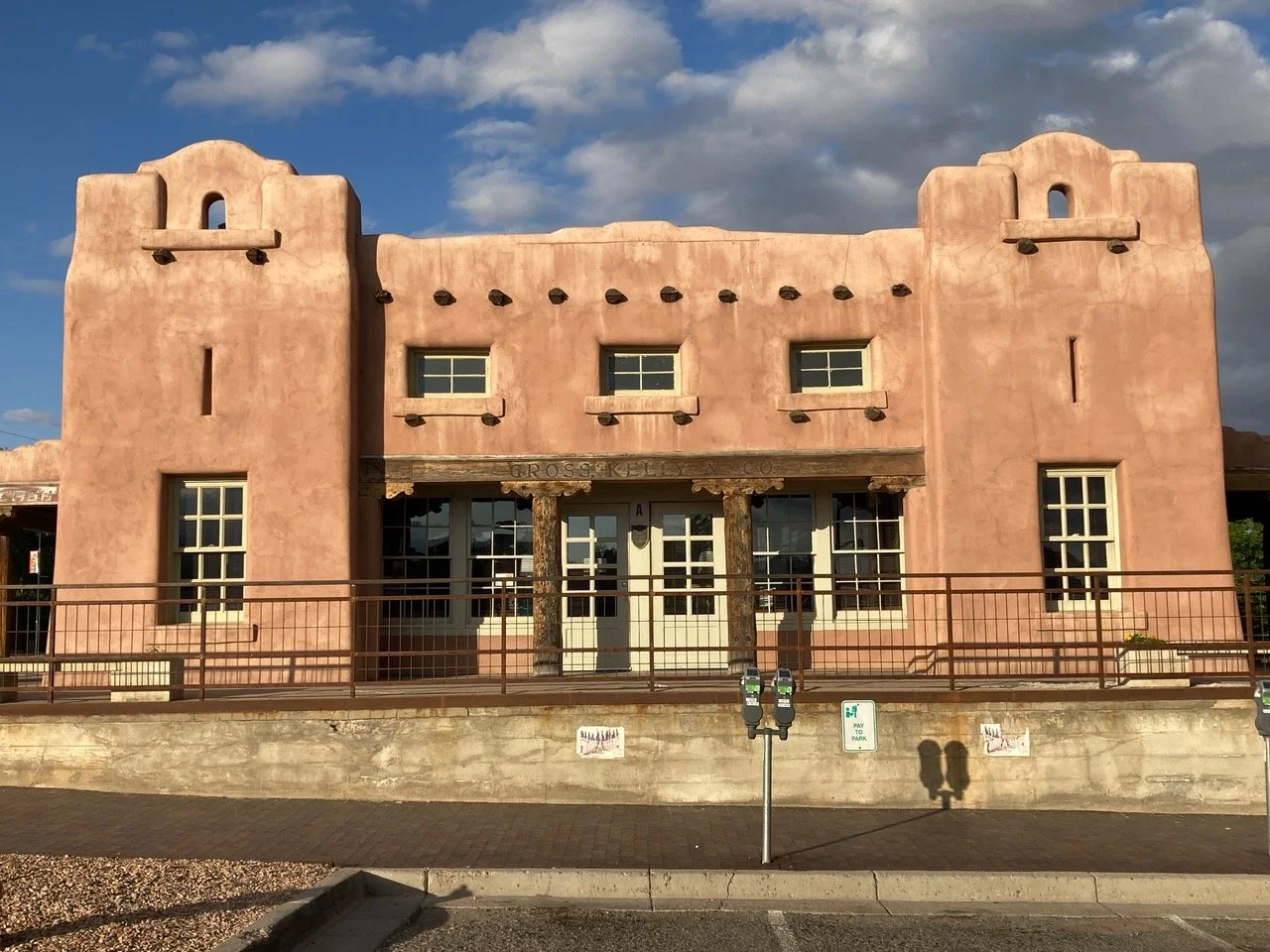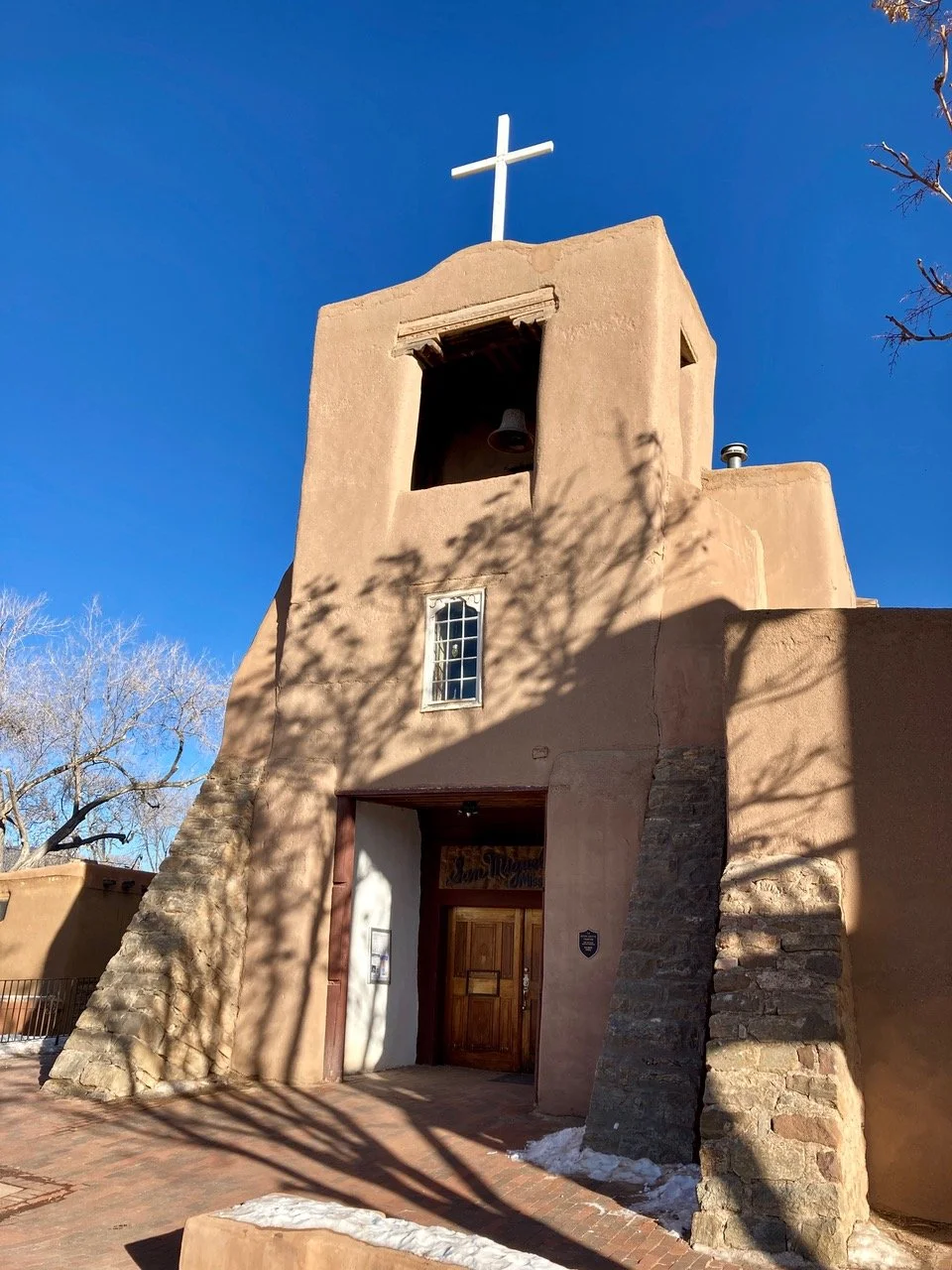Santa Fe Style
Santa Fe is known as the City Different, as nowhere else in the world will you find such a mix of architecture, art, cuisine, culture, and history. People are always wowed when they stand on the Plaza and view buildings unlike any they have seen before. This is the Santa Fe Style, promoted by the city since statehood in 1912 as something that makes our city truly unique.
It all began with adobe. The Spanish introduced adobe to the Southwest, but they got it from the Moors, who ruled Spain for nearly eight centuries. Adobe comes from the Arabic word al-tüb and is a prehistoric Mesopotamian method of mixing mud with sand and straw to create molded bricks. Once assembled into a structure, adobe bricks are plastered over with mud for protection, which must be reapplied every few years, as the rains gradually wash it off. Maintaining adobe is labor-intensive. Adobe houses keep cool in the summer and retain heat in the winter. Many buildings in Santa Fe were built with adobe well into the twentieth century.
Adobe bricks drying in the New Mexico sun
photo by Garrett Peck
After the American takeover of the Southwest from Mexico, Anglos (non-Hispanic whites) provided a variation to traditional rustic adobe architecture. They added Greek Revival modifications, such as milled columns, painted window sill (yes, the Anglos introduced glass), and brick copings along the roofline. It became known as Territorial Style, named after the New Mexico territorial period (1848-1912). An early example was the Borrego House, which now houses the restaurant Geronimo.
Borrego House on Canyon Road in Santa Fe
photo by Garrett Peck
Anglos had a poor opinion of adobe buildings and worked over the decades to tear them down. But by the time of statehood in 1912, people realized the old adobe structures had character and were a contributing factor to what made Santa Fe different. the architect Isaac Rapp combined two historic architecture styles into a new design known as Spanish-Pueblo Revival. He created the Gross Kelly Warehouse at the Railyard in 1913, the Fine Arts Museum (now the New Mexico Art Museum) in 1917, and La Fonda on the Plaza in 1922. Other architects such as John Gaw Meem soon followed.
Gross Kelly Warehouse in the Santa Fe Railyard
photo by Garrett Peck
Spanish-Pueblo Revival, the dominant architectural style in the city today, is mostly what you see around the Plaza. It incorporates portales (porches), vigas (log beams for the roof), and earthen-colored walls to resemble adobe. Most Spanish-Pueblo Revival buildings, however, are not adobe, but rather are built of brick or concrete. They are plastered with stucco instead of mud. In fact, most of Santa Fe’s historic adobe buildings, including the Palace of the Governors, are now plastered with stucco. However, there are a handful of exceptions, notably San Miguel Chapel.
San Miguel Chapel on Old Santa Fe Trail in Santa Fe
photo by Garrett Peck
Since 1957, Santa Fe’s building codes only allow these two historic architectural styles - Spanish-Pueblo Revival and Territorial Style - in its historic districts, though earlier historic buildings such as Craftsman or Mission are grandfathered in. This architecture is what defines Santa Fe Style and helps make Santa Fe the City Different.
About the author
Garrett Peck is an author, historian, and tour guide in Santa Fe. He is a board member of the Santa Fe Professional Tour Guides. He leads historic tours and excursions in the City Different, including Willa Cather’s Santa Fe, and is writing a book about how Cather wrote her “best book,” Death Comes for the Archbishop. You can reach him at www.garrettpeck.com.




